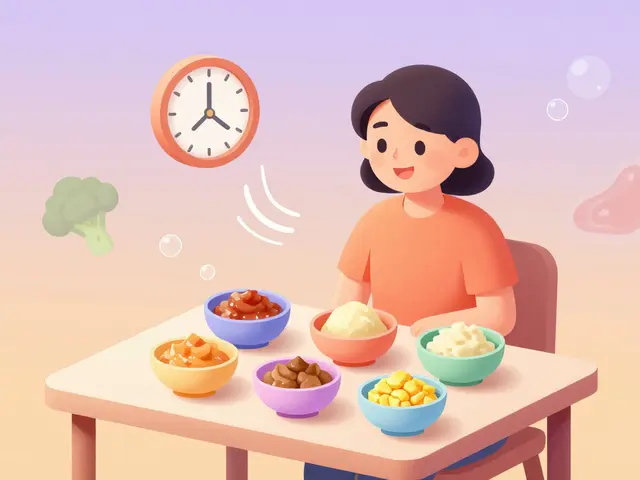Carbidopa-Levodopa: What You Really Need to Know
Levodopa is the single most effective drug for easing Parkinson’s symptoms, and carbidopa makes levodopa work better and safer. If you or someone you care for is starting this medicine, the basics below will help you use it smarter—not scared.
How it works & dosing basics
Levodopa turns into dopamine in the brain, which helps with slowness, stiffness, and tremor. Carbidopa stops levodopa from breaking down too early, so more reaches the brain and you get fewer stomach side effects. Doctors usually start with a low dose and raise it until symptoms improve.
Take it on a regular schedule. Most people use it two to four times a day depending on the pill formulation. Some forms act quickly for sudden "off" moments; others last longer for steady control. Never double a missed dose without checking with your prescriber.
Practical tips, side effects, and interactions
Timing with food matters. Protein-heavy meals can reduce how well levodopa is absorbed — try to keep large protein portions away from your dose times or take the pill 30–60 minutes before a big meal. Small snacks are usually fine.
Common side effects include nausea, sleepiness, dizziness when standing, and vivid dreams. A few people develop involuntary movements (dyskinesias) after long-term use; your doctor can adjust dose or add other meds to manage that.
Watch medications and supplements. High-dose vitamin B6 (pyridoxine) and certain antipsychotics can interfere with levodopa. Always tell every clinician and your pharmacist that you take carbidopa-levodopa.
If you notice sudden severe confusion, fainting, or a high fever with muscle stiffness, seek immediate care—these are rare but serious reactions. Routine checks with your neurologist help catch dose issues, mood changes, or sleep problems early.
Practical things that help day-to-day: set phone alarms for doses, keep spare pills in a labeled travel container, and carry a list of medications and your neurologist’s contact. If mobility fluctuates during the day, keeping a diary of "on" and "off" times helps your team fine-tune treatment.
Long-term planning matters. Over years you may need changes: different formulations, added medicines like dopamine agonists, or treatments for motor complications. Regular reviews with a movement-disorder specialist give the best outcomes.
Finally, get support. Physical therapy, occupational therapy, and simple home adjustments often make a bigger difference than many expect. Carbidopa-levodopa treats the chemical side of Parkinson’s; combining it with therapy and lifestyle changes treats the whole person.
As a patient taking Carbidopa-Levodopa, I cannot stress enough the importance of regular medical checkups. This medication helps manage Parkinson's disease symptoms, but it requires close monitoring by a healthcare professional. Regular checkups ensure that I'm on the right dosage and that any potential side effects are addressed early on. They also provide an opportunity for my doctor to assess the overall effectiveness of the treatment and make any necessary adjustments. Ultimately, staying proactive with my healthcare and maintaining open communication with my doctor has been crucial in managing my condition effectively.



